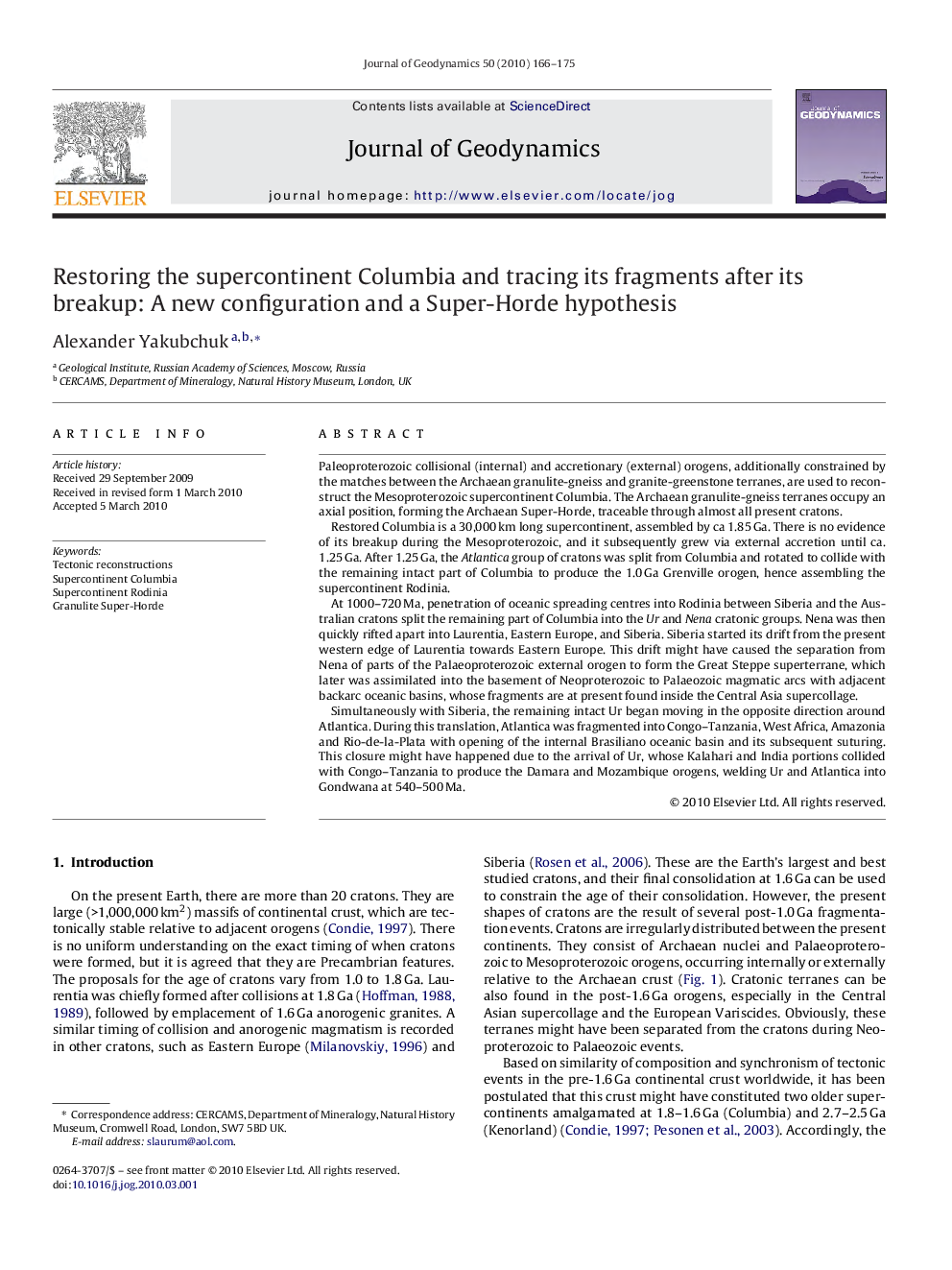| کد مقاله | کد نشریه | سال انتشار | مقاله انگلیسی | نسخه تمام متن |
|---|---|---|---|---|
| 4688531 | 1635798 | 2010 | 10 صفحه PDF | دانلود رایگان |

Paleoproterozoic collisional (internal) and accretionary (external) orogens, additionally constrained by the matches between the Archaean granulite-gneiss and granite-greenstone terranes, are used to reconstruct the Mesoproterozoic supercontinent Columbia. The Archaean granulite-gneiss terranes occupy an axial position, forming the Archaean Super-Horde, traceable through almost all present cratons.Restored Columbia is a 30,000 km long supercontinent, assembled by ca 1.85 Ga. There is no evidence of its breakup during the Mesoproterozoic, and it subsequently grew via external accretion until ca. 1.25 Ga. After 1.25 Ga, the Atlantica group of cratons was split from Columbia and rotated to collide with the remaining intact part of Columbia to produce the 1.0 Ga Grenville orogen, hence assembling the supercontinent Rodinia.At 1000–720 Ma, penetration of oceanic spreading centres into Rodinia between Siberia and the Australian cratons split the remaining part of Columbia into the Ur and Nena cratonic groups. Nena was then quickly rifted apart into Laurentia, Eastern Europe, and Siberia. Siberia started its drift from the present western edge of Laurentia towards Eastern Europe. This drift might have caused the separation from Nena of parts of the Palaeoproterozoic external orogen to form the Great Steppe superterrane, which later was assimilated into the basement of Neoproterozoic to Palaeozoic magmatic arcs with adjacent backarc oceanic basins, whose fragments are at present found inside the Central Asia supercollage.Simultaneously with Siberia, the remaining intact Ur began moving in the opposite direction around Atlantica. During this translation, Atlantica was fragmented into Congo–Tanzania, West Africa, Amazonia and Rio-de-la-Plata with opening of the internal Brasiliano oceanic basin and its subsequent suturing. This closure might have happened due to the arrival of Ur, whose Kalahari and India portions collided with Congo–Tanzania to produce the Damara and Mozambique orogens, welding Ur and Atlantica into Gondwana at 540–500 Ma.
Journal: Journal of Geodynamics - Volume 50, Issues 3–4, September 2010, Pages 166–175